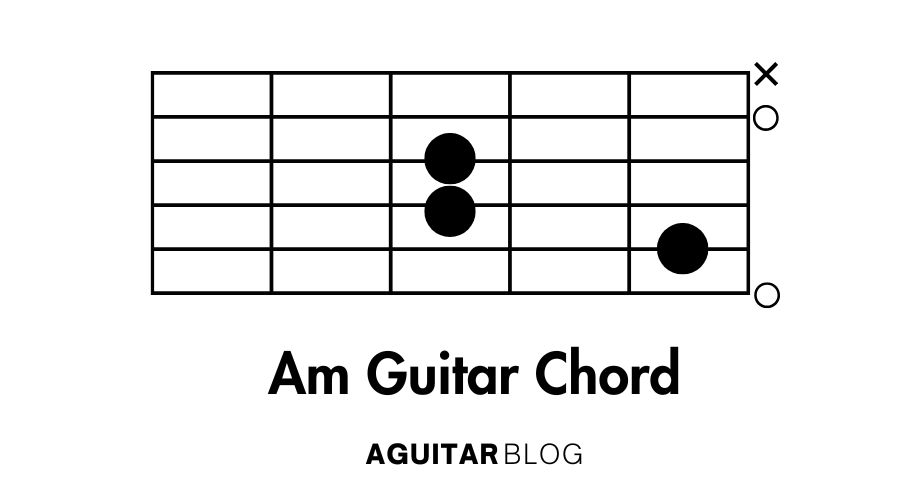The Am guitar chord, short for A minor, is an essential chord every guitarist should know. Its warm, melancholic tone makes it incredibly versatile, appearing in genres ranging from classical and folk to pop and rock. This guide will walk you through every detail of the Am chord, from its structure and finger placement to common mistakes, variations, and tips for practice.
What is the Am Guitar Chord?
The Am chord is a minor triad, meaning it consists of three specific notes that define its sound:
- A – The root note, which gives the chord its name.
- C – The minor third, adding the distinct melancholic tone.
- E – The perfect fifth, completing the harmony.
When played together, these notes create the emotional, reflective quality associated with minor chords.
How to Play the Standard Am Guitar Chord

The most common way to play the Am chord is in its open position, which is ideal for beginners. Here’s how to do it:
Step-by-Step Finger Positioning:
- Index Finger: Place it on the 1st fret of the 2nd string (B string).
- Middle Finger: Place it on the 2nd fret of the 4th string (D string).
- Ring Finger: Place it on the 2nd fret of the 3rd string (G string).
Strum only the top five strings (A to high E). Avoid playing the low E string.
Pro Tips for Clear Sound:
- Ensure your fingers are pressing down just behind the frets, not directly on them.
- Use the tips of your fingers and arch them to avoid muting adjacent strings.
- Strum gently at first to check if all strings produce a clear tone.
Video Tutorial Am Guitar Chord
For visual learners, a step-by-step video tutorial can make mastering the Am Guitar Chord much easier. Here’s a helpful guide for you:
How to Read an Am Guitar Chord Diagram
If you’re using a chord diagram:
- Dots indicate where to place your fingers on the fretboard.
- Numbers show which finger to use:
- 1: Index finger
- 2: Middle finger
- 3: Ring finger
- X above a string means not to play it, while O means the string is played open.
Common Am Guitar Chord Variations
To add versatility to your playing, try these variations:
Am7 (A Minor 7):
- Play the standard Am shape but remove your ring finger.
- This creates a softer, jazzier tone.
Am9 (A Minor 9):
- Start with the Am7 shape and add your pinky finger to the 3rd fret of the B string.
- This chord adds a dreamy, modern sound to your playing.
Am Barre Chord (5th Fret):
- Barre all the strings at the 5th fret with your index finger.
- Place your ring and pinky fingers on the 7th fret of the A and D strings, respectively.
- Optionally, add your middle finger to the 6th fret of the G string for fuller sound.
Am/E (A Minor with E Bass):
- Use the standard Am shape but strum all six strings, including the low E string.
- This adds depth to the chord, making it suitable for intros and outros.
Common Chord Progressions Using Am
The Am chord is often paired with others to create beautiful progressions. Here are some examples:
- Am – G – F – C
- A popular progression in ballads and acoustic songs.
- Am – Dm – E – Am
- Common in classical and Spanish-style music.
- Am – C – G – F
- Found in countless pop and rock songs.
Popular Songs Featuring the Am Guitar Chord
The Am chord is featured in many iconic tracks. Here are a few examples:
- “Knocking on Heaven’s Door” by Bob Dylan
- “House of the Rising Sun” by The Animals
- “Wonderwall” by Oasis
- “Hallelujah” by Leonard Cohen
Tips for Practicing the Am Guitar Chord
Beginner Practice Tips:
- Practice Switching Chords:
- Alternate between Am and other chords like C, E, and G to improve transitions.
- Use a metronome to keep a steady rhythm.
- Focus on Clean Sound:
- Play each string individually to check for buzzing or muted notes.
- Experiment with Strumming Patterns:
- Start with simple downstrokes and gradually incorporate upstrokes.
- Match your strumming to the style of the song you’re playing.
Advanced Tips:
- Practice the Am barre chord shape to strengthen your fingers and expand your playing range.
- Use the Am chord in arpeggios, playing each note of the chord individually for a dynamic sound.
Common Mistakes to Avoid
- Muted Strings: Ensure your fingers are not resting on adjacent strings.
- Low Finger Pressure: Press firmly enough to produce a clear tone but avoid overexerting.
- Strumming the Low E String: Remember, the low E string should not be played in the open Am chord.
Related Chords to Am
Understanding chords related to Am can help you create more interesting progressions:
- A Major (A): A brighter counterpart to Am, often paired for contrast.
- E Minor (Em): Shares a similar melancholic quality, great for transitions.
- C Major (C): Often used with Am due to their shared notes.
Final Thoughts on the Am Guitar Chord
Mastering the Am guitar chord is an important milestone in your guitar journey. Whether you’re strumming along to a ballad or experimenting with its variations, the Am chord will always be a valuable tool in your musical toolbox. Practice regularly, focus on technique, and enjoy exploring the expressive power of this beautiful chord!